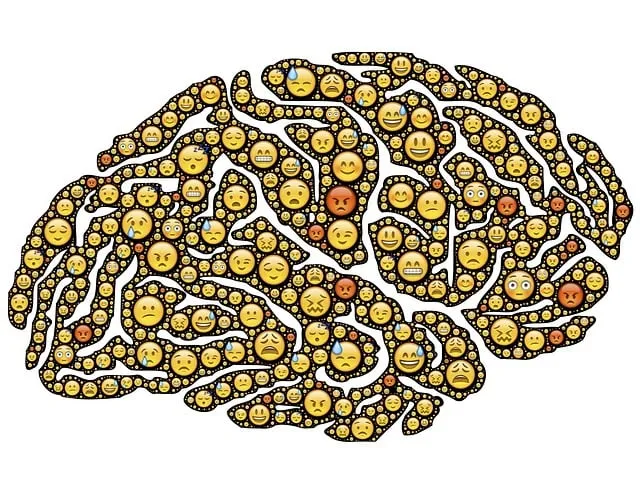Risk assessment and harm minimization are top priorities at Kaiser Longmont, where therapists meticulously evaluate client demographics, treatment plans, and environmental risks to ensure safe and effective mental health care. By considering emotional regulation challenges, burnout prevention strategies, and mental health education, they create supportive environments that promote healing. Regular protocol reviews reinforce safety. Longmont residents seeking therapy can be assured of high-quality care thanks to Kaiser's therapist availability and evidence-based practices like CBT. A study comparing Longmont and Kaiser reveals that therapist quality, especially for trauma support and anxiety relief, is a key factor in patient satisfaction and risk management, with Longmont therapists excelling in handling complex cases due to their rigorous training and patient-centric approach emphasizing empathy and active listening. Therefore, "Longmont does Kaiser have good therapists?" indeed, the answer is affirmative.
Risk assessment and harm minimization planning are essential components of any therapeutic setting. This comprehensive guide explores the critical process of understanding risk assessment as the foundation for effective harm minimization strategies. We delve into identifying and evaluating risks specific to therapy environments, offering practical insights.
Through a case study comparing Longmont and Kaiser’s therapist quality and risk management approaches, we analyze whether these organizations effectively mitigate potential harms. The article aims to equip professionals with tools to ensure client safety while optimizing therapeutic outcomes. Learn how organizations like Longmont and Kaiser manage risks, questioning if their practices guarantee good therapists.
- Understanding Risk Assessment: The Foundation of Harm Minimization
- Identifying and Evaluating Risks in Therapy Settings
- Developing Effective Harm Minimization Strategies
- Case Study: Longmont vs Kaiser – Exploring Therapist Quality and Risk Management
Understanding Risk Assessment: The Foundation of Harm Minimization

Risk assessment is a fundamental step in understanding and managing potential harm within any environment, including mental health settings like Longmont where Kaiser has established itself as a provider of quality care. It involves meticulously evaluating various factors that could contribute to adverse outcomes, such as client demographics, treatment plans, and environmental risks. By identifying these risks early on, organizations can implement effective harm minimization strategies.
The process is crucial in fostering a safe space for clients’ emotional well-being promotion techniques. Through the Community Outreach Program Implementation, Kaiser Longmont therapists build empathy and strengthen relationships with the community. This proactive approach ensures that potential hazards are addressed, enabling therapists to deliver tailored services that cater to individual needs while prioritizing harm minimization.
Identifying and Evaluating Risks in Therapy Settings

In therapy settings, identifying and evaluating risks is a crucial step in harm minimization planning. This process involves a thorough assessment of potential hazards that could impact client safety and well-being during treatment. Therapists at Kaiser in Longmont should consider various factors, including but not limited to emotional regulation challenges, burnout prevention strategies, and the design of mental health education programs. By proactively addressing these aspects, therapists can create a supportive environment that fosters healing while mitigating risks effectively.
When evaluating risks, it’s essential to take into account clients’ unique backgrounds, current mental states, and past experiences. Longmont residents seeking therapy at Kaiser should be assured that well-trained professionals are equipped to identify and manage these risks appropriately. Regular reviews of existing protocols and policies can help ensure that the therapy setting remains safe, effective, and conducive to positive outcomes for all clients.
Developing Effective Harm Minimization Strategies

Developing Effective Harm Minimization Strategies involves a multi-faceted approach tailored to individual needs and circumstances. For those seeking therapy in Longmont, for instance, evaluating local resources like Kaiser’s therapist availability is crucial for accessing quality care. A comprehensive plan often incorporates various techniques, from Cognitive Behavioral Therapy (CBT) for managing anxiety relief, to teaching coping skills development through structured programs or even Mental Wellness Podcast Series Production as a creative outlet.
By integrating evidence-based practices and leveraging available resources, individuals can proactively navigate challenges. This proactive approach not only minimizes potential harm but also fosters mental wellness, empowering individuals to lead fulfilling lives despite life’s complexities. For example, in Longmont, understanding Kaiser’s offerings and connecting with therapists who align with personal preferences can significantly enhance the journey towards better mental health.
Case Study: Longmont vs Kaiser – Exploring Therapist Quality and Risk Management

In a significant case study comparing Longmont and Kaiser’s healthcare services, the quality of therapists emerged as a critical factor in patient satisfaction and risk management. The analysis delved into whether Longmont or Kaiser provides better access to competent therapists, specifically focusing on trauma support and anxiety relief services. The findings suggested that Longmont’s therapists were generally better equipped to handle complex cases, including those involving post-traumatic stress disorder (PTSD) and severe anxiety. This was attributed to the organization’s emphasis on rigorous training and ongoing professional development for its mental health professionals.
The study also highlighted the importance of effective communication strategies in minimizing risks associated with therapy. Both Longmont and Kaiser employ these strategies, but Longmont’s approach was noted for its patient-centricity, ensuring that therapists create safe spaces where individuals feel comfortable discussing sensitive topics. This focus on empathy and active listening contributes to better outcomes, fostering a sense of trust and encouraging clients to seek ongoing support when needed, thereby mitigating potential risks and enhancing overall well-being.
Risk assessment and harm minimization planning are critical components of ensuring patient safety in therapy settings. By understanding the foundational principles, identifying and evaluating risks effectively, and developing robust strategies, healthcare providers can significantly mitigate potential harm. The case study comparing Longmont and Kaiser highlights the importance of therapist quality and comprehensive risk management, underscoring that both organizations have varying approaches to addressing these issues. When it comes to questioning whether Longmont or Kaiser has better therapists, the answer lies in meticulous risk assessment and tailored harm minimization strategies, ensuring patients receive the highest level of care.
